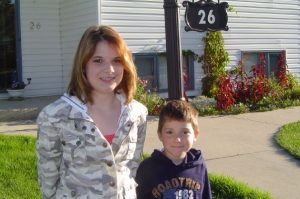Upon reading the story of Coyote’s twin brother, I couldn’t help but let my mind wander to this first story I had heard about Coyote; A Coyote Columbus Story by Thomas King. For those not familiar, King satirizes the “First Encounter” story of Columbus, by utilizing Coyote’s trickster ways to protect her land and people from the clownish Christopher Columbus. I often consider this story to be my “First Encounter”. I heard it for the first time in a first-year English course at Okanagan College. Up until that point, my education on the various Indigenous cultures and stories of Canada had been glaringly sparse, not that I’m hubristic enough to say that they’re any better now. Beyond learning about Residential Schools in High school, and a few horribly cartoonish colouring pages in eighth grade, Indigenous narratives were always treated as an afterthought. Something we had to learn about, but definitely weren’t going to be spending a lot of time on.
This tangent about A Coyote Columbus Story may seem like a strange sequitur, but it’s something that has been on my mind during our readings and this course. I have often wondered why it took so long to be aware of these stories, given that my parents grew up in a city with a high Indigenous population, and my Grandmother even spent time growing up on a reserve, you’d think somewhere I would have heard these stories. But then I read what Harry said to Wendy when he thought he was dying. Wickwire writes, “it was a relief that Harry had expected me to listen to his stories many times before drawing any conclusions. He stressed that they contained hidden messages and connections that would take time to decipher” (Robinson, Wickwire 19), causing me to realize that it wouldn’t have mattered if I had heard Coyote’s story before, because I had no reason to make meaning of it before.
As touched on in previous posts, the world of literature and story are often kept in separate spheres. I once had a friend scoff at me when I excitedly told him I was taking a course at UBCO titled: Superhero Narratives. His British sensibilities clearly offended he asked, “Why aren’t you studying Shakespeare?” His perception of what “worthwhile” literature is, was stagnant, and there wasn’t any argument that I could make in one conversation to change that. For me, these narratives held meaning because I studied them, and read them over and over again, to draw meaning and connection. Just like I would with any Shakespearean work.
Which brings me back to the story of Coyote’s twin brother. I’ve read over this passage a few times, hoping to find a definite answer. I can see the allegory; British colonizers used the fact that their laws and documents were written in a foreign language to the Indigenous peoples they encountered to unfairly, but to British sensibilities “legally”, dominate the land and its people. Perhaps that is the important paper that the twin stole, but even as I write this, it feels wrong to commit on answer to this question. It’s as Harry states:
“but if I tell you, you may not understand.
I try to tell you many times
But I know you didn’t got ‘em…” (Robinson, Wickwire 18).
I feel like I don’t have enough understanding to confidently put forth an answer. Not one that I’m happy with at least. And I acknowledge that any answer I formulate now, may very well change by the end of this course, or even years from now, as I come back to this story.
I remember visiting Head Smashed In Buffalo Jump with my family one summer when I was around ten. While there my parents were chatting with a guide who was an older Indigenous

man. When he found out we were from Red Deer, he proceeded to tell is the story about how the city was named. Basically, the European settlers had mistakenly identified the Mule deer that roamed around the riverbanks as Red deer, even though that species of deer had never been found in that area. Now, the misidentified animal marks all city logos, and can be spotted on the sign entering the city limits. My narrative understanding of my city changed that day, and I recall the man’s story every

time I enter the city limits. That’s why it is so important to have an interactive relationship with the narratives we encounter, because you never know what piece of information you gain or what connection you make, could change its entire meaning for you.
Works Cited
Robinson, Harry, and Wendy Wickwire. Living by Stories a Journey of Landscape and Memory.
Talonbooks, 2005.

